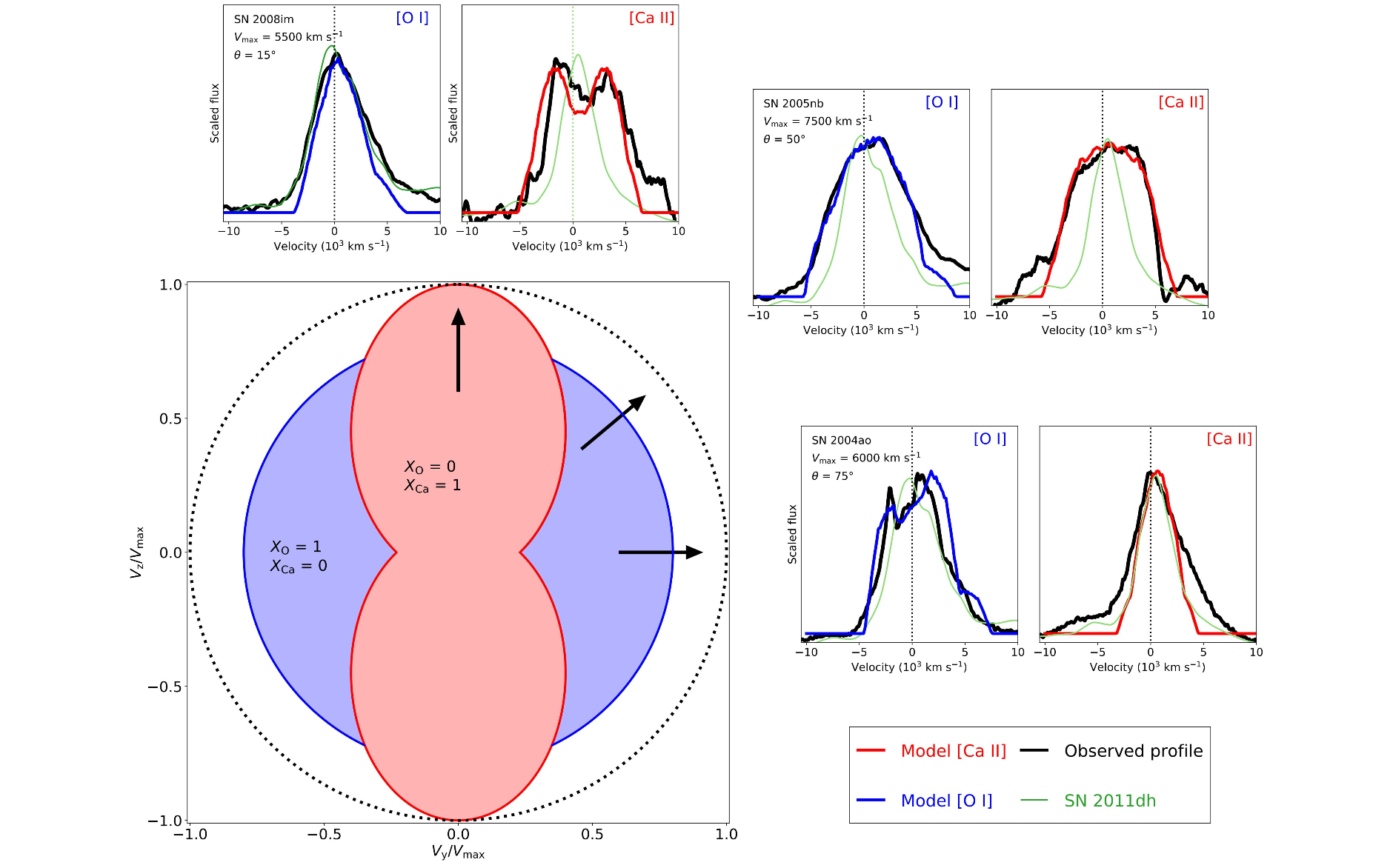An aspherical distribution for the explosive burning ash of core-collapse supernovae - Notes on Fang et al. 2023
The following are just some very loose notes on the paper “An aspherical distribution for the explosive burning ash of core-collapse supernovae”.
Summary
- Successful Core Collapse Supernovae (CCSNe) require an aspherical explosion
- Spectroscopy of stripped envelope CCSNe supports this (about half are aspherical)
- Oxygen burning ash (Ca II) and unburned oxygen (O I) distributions are aspherical and anti-correlated.
- Oxygen is thought to be burnt in two separate bubbles.
- A-sphericity grows with carbon-oxygen core.
Notes
- The idea is that if the energy released is concentrated in one direction, the explosion will occur in a bipolar configuration.
- The oxygen-rich materials are compressed towards the equatorial plane.
- The explosive burning takes place along the axis perpendicular to the oxygen-rich plane.
- Stripped-envelope supernovae (SESNe) are produced by massive stars that lose most of their hydrogen envelope before exploding.
- The central region becomes visible after several months because the explosion is no longer blocked by the massive envelope.
- That’s when the spectrum is dominated by O I and Ca II.
- So far, O I has been studied, but deriving a geometry based on it alone poses some problems.
- In this paper, they combine the analysis of the two profiles to infer the geometry of the explosion.
- Of the 80 SESNs analysed
- 41 show single-peaked O I and single-peaked Ca II,
- 12 show single-peaked O I and double-peaked Ca II,
- 27 show double-peaked O I and single-peaked Ca II.
- The anti-correlation of the profiles can be seen as different viewing angles observing similar explosion configurations (bipolar explosion with burning ash distributed along a specific axis, surrounded by an oxygen-rich torus).
- The width of the profile can also be analysed, as it should reflect the spatial extent of the elements along the line of sight.
- The double-peaked profile of Ca II with its width suggests a bipolar distribution in its emitting region.
- Furthermore, the ratio of O I/Ca II can be used as a proxy for the CO core mass.
- No correlation was found between the bipolar rate and the core mass, suggesting that the mass does not indicate the spherical or bipolar configuration.
- However, the situation is more complicated than that, and they dig deeper and find:
- A common explosion mechanism underlies the CCSNe over a range of CO core masses.
- The double peak of Ca II increases with average mass, which is explained by different transition angles, which increase. This is consistent with the scenario that the explosion becomes more aspherical and the burning ash becomes more detached and collimated as the CO core grows.
This post is licensed under CC BY 4.0 by the author.
